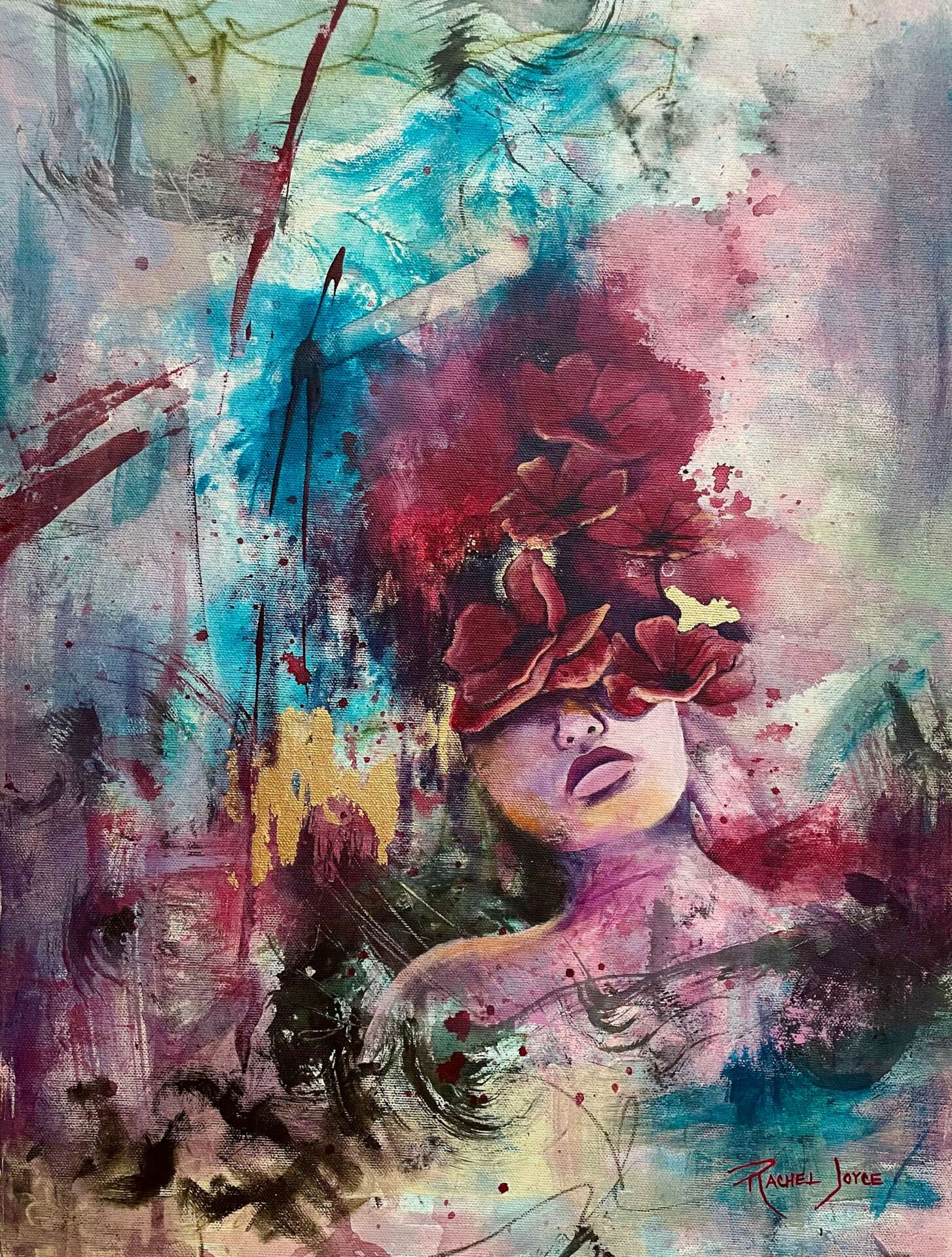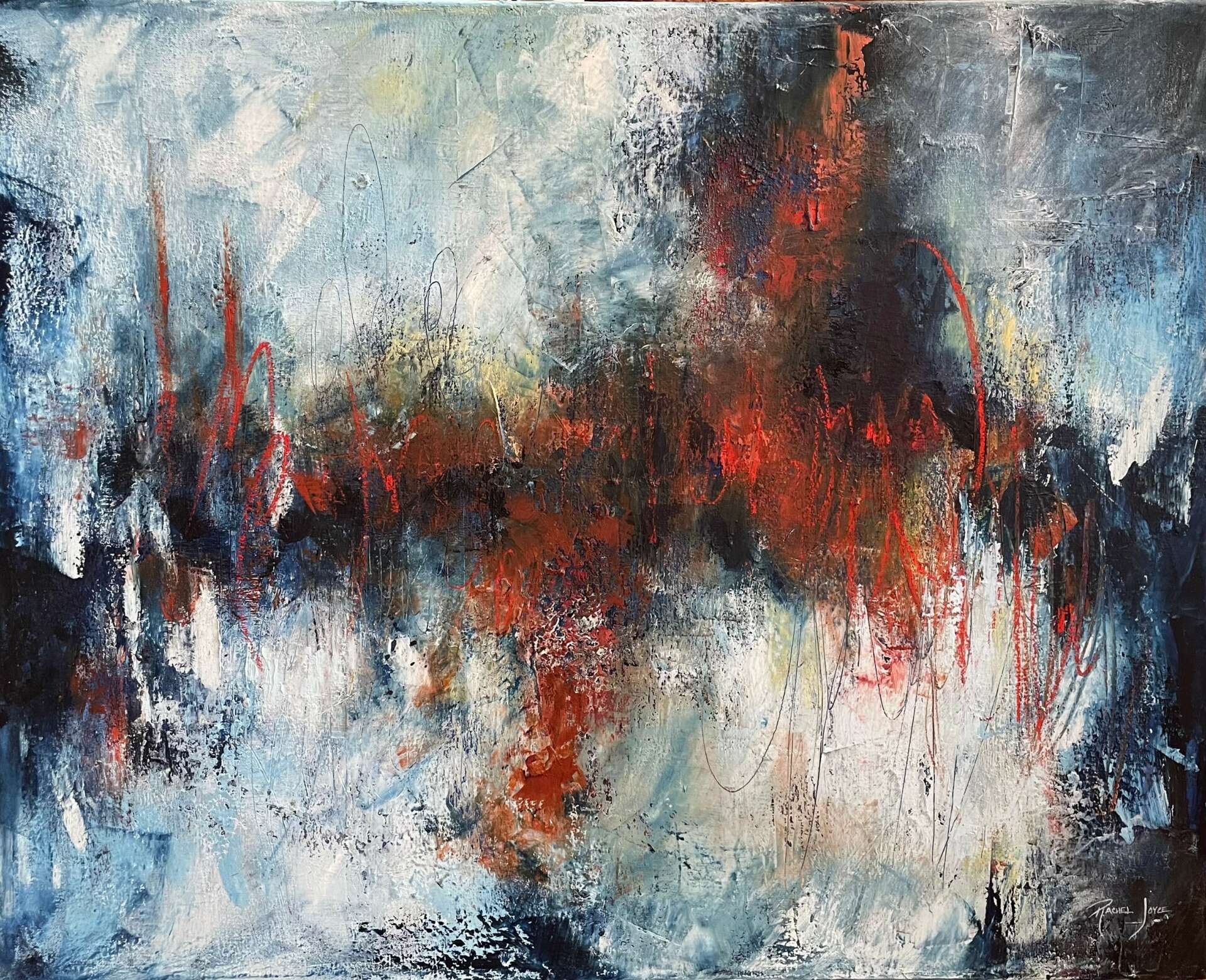We’re excited to introduce you to the always interesting and insightful Rachel Joyce. We hope you’ll enjoy our conversation with Rachel below.
Rachel, thanks for joining us, excited to have you contributing your stories and insights. Do you think your parents have had a meaningful impact on you and your journey?
I was very lucky in the sense that my Dad was the person who first got me involved in the arts. His college friend was opening an art school in our neighborhood and he signed me up when I was about seven years old as a favor to his friend. In doing so I discovered that I had some natural talent and learned to further my skills. I ended up taking classes there from elementary school all the way through college until I left the suburbs to live in the city. My parent’s never faltered in their support in my creative endeavors and never questioned my, what some parent’s might call unsafe, choice to go to college for art. They fully supported my choice and encourage me to this day to continue pursuing my art as a career.

Rachel, love having you share your insights with us. Before we ask you more questions, maybe you can take a moment to introduce yourself to our readers who might have missed our earlier conversations?
As I mentioned, I started painting when I was very young. I began taking lessons at a small art school in my hometown, Lake Zurich, Illinois. It was at Mainstreet Art Center that my love for painting blossomed. I learned the fundamentals and beyond during my time at Mainstreet. However, as a young artist I had always been under the impression I needed to find a “style” and fit my work within the constraints of that style. I resisted for many years as I had always been interested in all forms of artistic expression. I couldn’t imagine choosing just one way to focus my career. I also didn’t like feeling as though my creativity was being limited just so that my work would fit into one specific category.
At some point in college, I discovered the artist Gerhard Richter, and he rocked my world. Seeing a wildly successful artist like Richter thrive while not committing to any single media or style was life changing; it made me realize I didn’t need to settle either. Up to this point I had always painted in a traditional, realistic style but I began to branch out and explore the endless possibilities of abstract art. I now consider myself a versatile artist not limited to any single style or medium. I draw a great amount of inspiration from nature and the everyday moments I view around me. While I enjoy inventing scenes that may not exist in our physical world, I am also interested in recreating moments I’ve captured through my photography and in working from a client’s imagination or photographs. For me, painting abstractly has always been more expressive and freeing, whereas painting from a reference is always structured and satisfying. I find it extremely rewarding to work in both realms; and in that way I don’t tire of either. Currently my work moves back and forth between abstraction and realism as I aim to create interesting and beautiful art that challenges and rewards both the viewer and me. I believe the versatility in my work and my unwillingness to be boxed into one single style sets me apart from other artists who generally stick to one way of creating. While I am not currently accepting commissions, as I am working to grow my portfolio this year, I do enjoy working with clients to bring their ideas and their space to life with a custom work of art.

In your view, what can society to do to best support artists, creatives and a thriving creative ecosystem?
There are so many ways, big and small, that society can support artists and the creative ecosystem. Some of the small things people can do is to follow an artist on social media and engage with their content. This is the easiest and freest way to support because by liking or sharing an artists content you are potentially spreading that content to new eyes and if the right eyes see the work it could lead to something bigger.
Attend art shows; showing up and supporting pop up events or gallery shows regardless of whether you intend to buy art or not is a great way to support artists. Purchase a piece that speaks to you or commission a custom piece. On a whole though, society needs to protect the arts by not allowing schools to lose their art programs, the world needs art and children need the arts as a way of expression. Donate to programs or organizations in need who aim to keep the arts alive.

How did you build your audience on social media?
Social media, in my opinion, is a necessary evil that we creatives now rely on to share our work. I started my Instagram account around 2016 and I still haven’t really mastered it but to be honest I also don’t really care to. While I acknowledge it is a great way to share the work we make, it can easily become a huge distraction to actually creating. It’s almost become another job to create interesting and engaging content to share; it takes a lot of time to put that content together in a thoughtful manner and most of the time the algorithm works against us no matter how good the content is, So it gets frustrating fast. Which is why I’ve sort of put social media on the back burner in the last year. However, in lieu of this small anti social media rant, some of my personal practices that I have found successful are to always use relevant hashtags in your posts, tagging relevant people or pages in your posts, sharing your new posts in your story, being an active and engaging account (ie commenting on other peoples posts and liking other peoples content) and REELS REELS REELS baby. The algorithm, and the people love reels. 

Contact Info:
- Website: https://racheljoyceart.com
- Instagram: @racheljoyceart
- Facebook: https://www.facebook.com/Racheljoyceart/
- Youtube: @racheljoyceart2690


